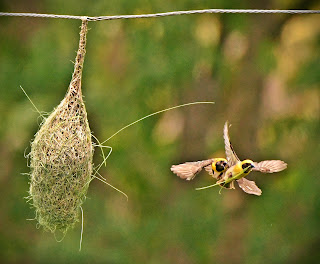Wildlife Whisperer – The Learnings
Wildlife Whisperer:
(Part 2 - The Learnings)
Before entering the world of actual jungles, the synonym that I associated with jungles was ‘jungle raaj’, essentially meaning chaos and anarchy. Where might is right. An adage used to describe much of the chaos that humankind is associated with. Now, having visited jungles multiple times, across the length and breadth of the country, I can guarantee that whoever has coined the word, or uses it regularly, has never ever entered a real jungle. Because a jungle is about absolute order, respect, balance and sustainability - as long as humans do not interfere. There was a time when humans were awed by nature, and responsive to it. Now, with a sense of entitlement creeping in, we think we have ownership and rite of passage everywhere, including the jungles and wilderness.
Some of my basic learnings from the jungles are:
1. In jungles there is no hoarding. Animals hunt / eat ONLY when hungry. No random killing. No killing to eat later. No killing to change taste / try something new. Also, they only kill enough that they can finish, with some leftovers for other species. In the picture below we see how a lion is polishing off his kill, with the hyena trying to steal it, and fox ready to grab a piece, because that would be enough for him. Every morsel gets consumed, by different species.
2. Mothers will be mothers. Care givers, loving and super protective. Whether it is a lion, tiger, elephant, rhino, hippo or even a regular parrot. They will court danger, just to keep their young ones safe. Never remotely mess with any young animal, in the vicinity of their mother. Even if the cub is coming towards you out of curiosity. Because if and when the cub cries out, the mother will for sure spring into action, without thinking for a moment that perhaps her child was the one who made a mistake. I faced this clearly on 2 occasions, once in Ranthambore Tiger Reserve (Rajasthan) with a Tiger cub, and at another time in Dachigam National Pak (Kashmir) with a Himalayan Black Bear cub. Learned my lesson quickly, and have taken double care never to repeat the mistake.
3. There is beautiful synergy in the forest. In summers I have seen that when leaves at the bottom of tree get over, monkeys go higher and shake branches so that deer can have access to food. When a predator is around and a prey cannot smell or see it, they give warning calls. In Masai Mara during wildebeest migration, since wildebeest are short sighted, their herds are led by zebras and at one point I saw a giraffe leading the wildebeest herd. When wildebeest cross a crocodile infested river, hippos come to their rescue and actually fight with the crocodile. Nature takes care of its weaker species. Gives them allies in their daily struggles.
I also had specific myths about the forest, which slowly got disintegrated.
Myth 1: Predator attacks prey when hungry, and food is always available in plenty.
Fact: Contrary to my earlier understanding, it is a tough world in the jungles. While the predator has more physical power, the prey has strategy and allies. Even if there is a herd of deer available, a predator will identify the weakest among the heard and only attack that one. If they fail, and they often do, they go back to the drawing board to re-strategise, not jump on the next available one.
Myth 2: Animals have no recorded knowledge or are not intelligent enough. Learning and teaching is a human speciality.
Fact: All of life, and survival, is a learned behaviour. Animals might not have recorded history like humans, but parents, especially mothers teach essential skills of hunting and safety to young ones, which they have learnt from their own parents. The best examples are of animal migration. Bird migration, similar to the wildebeest migration that follows the rains, is a natural miracle. Migratory birds fly hundreds and thousands of kilometres to find the best ecological conditions and habitats for feeding, breeding and raising their young. Migratory birds have the perfect morphology and physiology to fly fast and across long distances The Red Knot has one of the longest total migration routes of any bird, travelling up to 16,000 kilometres twice a year. It breeds in Siberia and over winters on the west coast of Africa, some even going down to the tip of South Africa. It is truly amazing how migratory birds can navigate with pin-point accuracy without any GPS. (More on my new found awe of birds to come in the next blog).
Finally, one of my biggest learnings is that animal corridors have existed over centuries. Sadly, humans most often do not have enough knowledge about these corridors. And even when they do have knowledge, humans give rarely any consideration to animal movement while making their ambitious developmental plans. Human aspirations need to be revisited because the animal kingdom follows nature, it is subservient to natural laws, and by now we know that we cannot afford to mess with nature ourselves.
All this learning is in a continuous loop. I open myself to forests, each time I visit, and am always ready to be surprised. It is also in the jungles that I truly breathe in peacefully and enjoy the beauty of each season. Every season has a role to play in the regeneration of earth and its species.
Regeneration and evolution are the name of the game, and important for sustainability of the planet!




Comments
Post a Comment